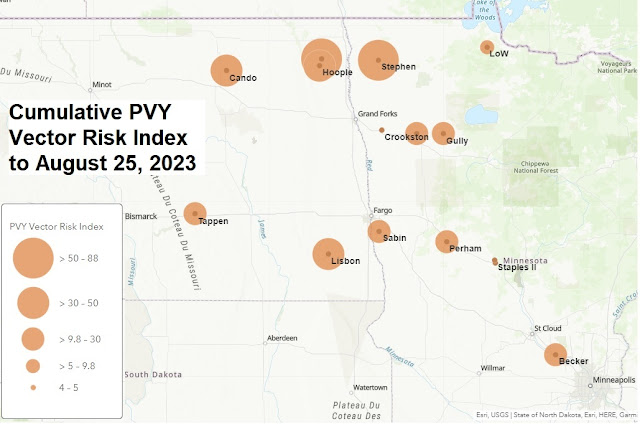Trap Catches to Aug 18 - Aug 25, 2023.
With 9 trap locations reporting this week, we've seen a big drop in capture numbers. Not only are total regional captures are down (not surprising as some locations have vine killed), so are the average captures per location. Last week , average vector counts per trap were 55.7, this week an average of only 23.7 vectors were captured per trap. Some important vectors were recovered but the average per trap increase in the PVY Vector Index decreased as well from last week. As we move into September, hopefully aphid vector numbers will continue to decrease.
Green peach aphids (GPA) were again recovered in several sites this week and average numbers per trap were slightly higher than last week. Average English grain aphid numbers per trap were only 20% of last week. Soybean aphids, while still numerous and widespread were down by 60% per trap. Most other vector aphid species saw either a decrease per trap or stayed roughly the same as last week. Total regional vector capture this week was only 213 compared to last week's 780; this makes the average per trap capture 23.7 vector aphids per trap compared to last week's average of 55.7/trap.
While this is good news overall, it should be noted that as long as vines are green, aphids will be attracted to feed on them. Consequently, without vine kill, the potential for transmission of virus still exists. it's still advisable to practice the appropriate precautions.
So, you keep scouting and we'll keep counting.




